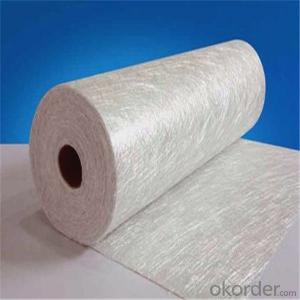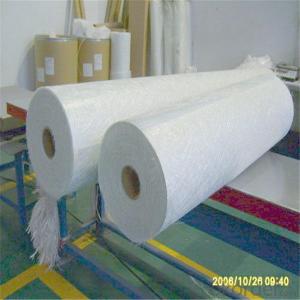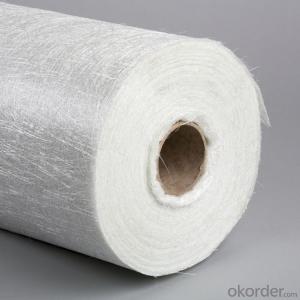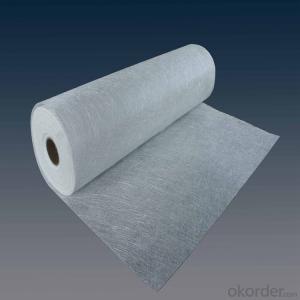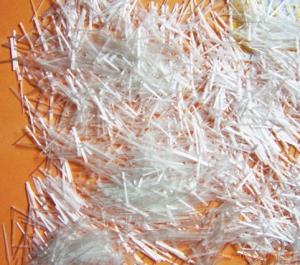Fiberglass Chopped Sand Mat for Boats
- Loading Port:
- Tianjin
- Payment Terms:
- TT OR LC
- Min Order Qty:
- 100 m.t.
- Supply Capability:
- 20000 m.t./month
OKorder Service Pledge
Quality Product, Order Online Tracking, Timely Delivery
OKorder Financial Service
Credit Rating, Credit Services, Credit Purchasing
You Might Also Like
Quick Details
| Technique: | Chopped Strand Fiberglass Mat (CSM) | Dimensions: | 450gsm | Mat Type: | Continuous Filament Mat |
| Fiberglass Type: | E-Glass | Softness: | softness | Place of Origin: | Jiangxi, China (Mainland) |
| Brand Name: | cnbm | Model Number: | 450gsm | color: | white |
| fiberglass type: | E glass | product: | e-glass powder chopped stand mats | binder: | powder or emulsion |
| width: | 1040 or 1270mm, as your requirement | weight: | 30 or 45kg/roll | paper tube diameter: | 90mm |
| outer diameter of roll: | 256mm | packing: | plastic film+carton box + pallet |
Packaging & Delivery
| Packaging Details: | plastic film+carton box + pallet |
| Delivery Detail: | 15-20days |
Specifications
1.e-glass powder chopped stand mats
2.binder:power or emulsion
3.width:1040mm or 1270mm
4.weight:450gsm
Picture
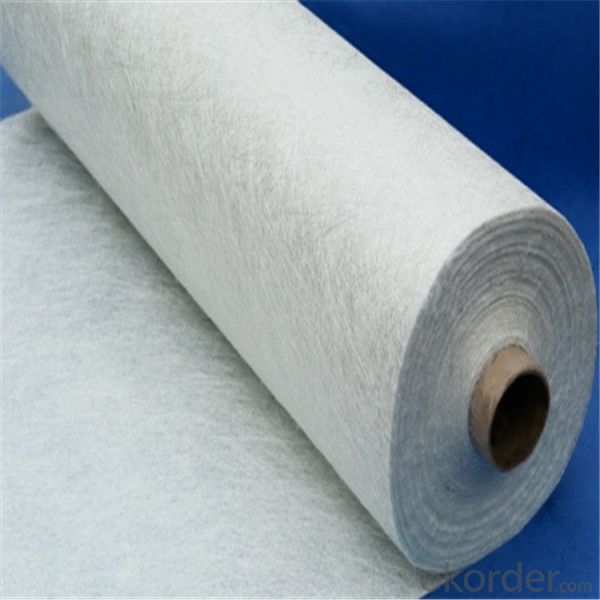
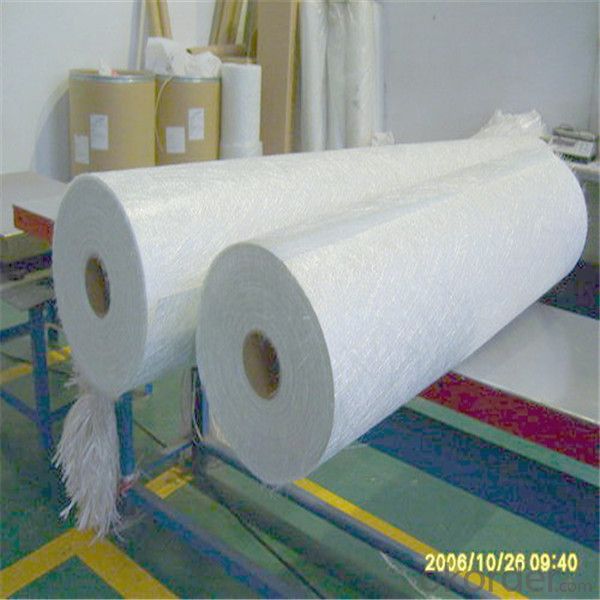
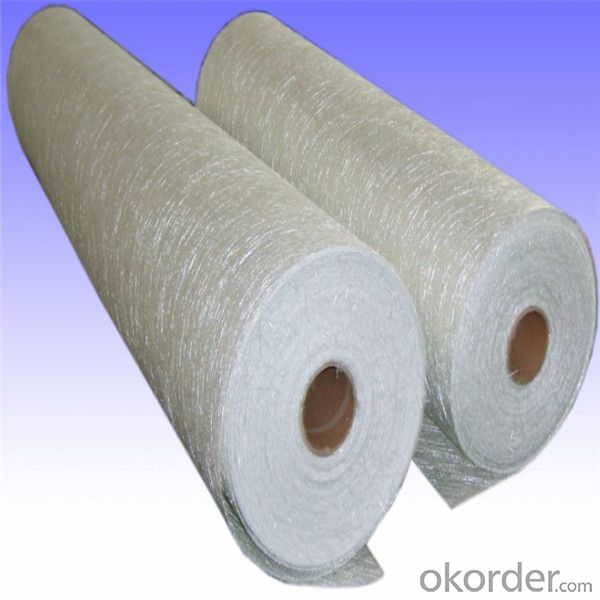
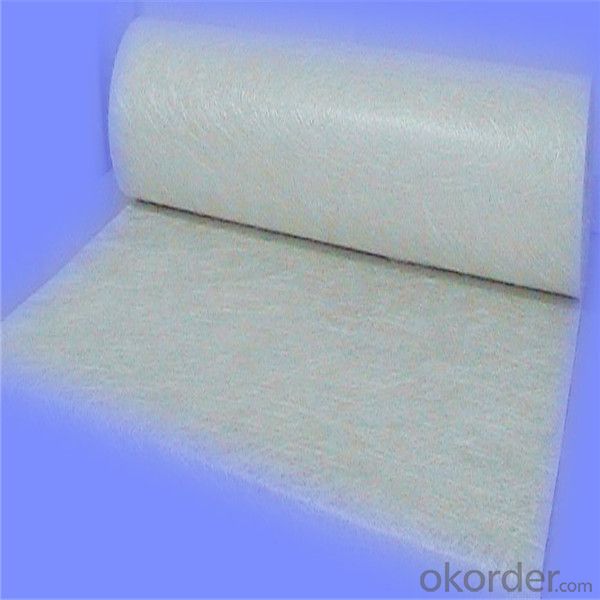
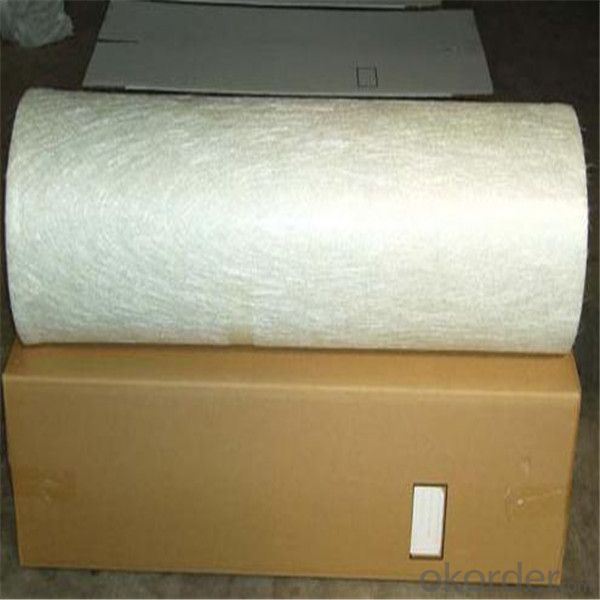
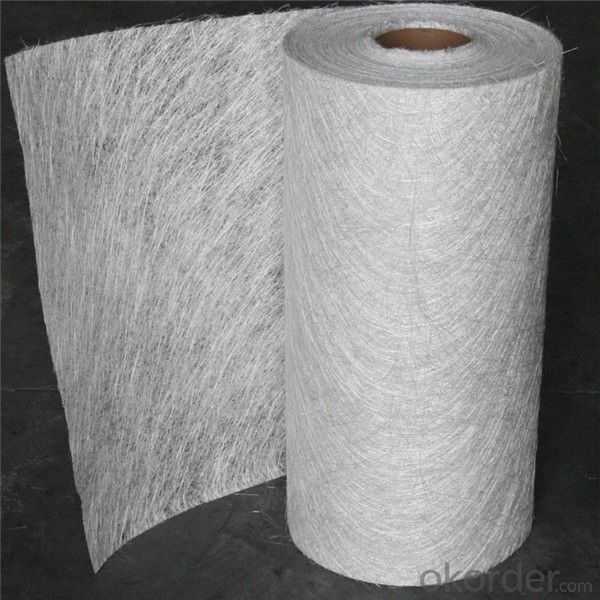
- Q:What does glass fiber do?
- It is a kind of excellent inorganic non-metallic materials, having the advantages of good insulation, good corrosion resistance, which is equivalent to a piece of hair. It is founding by high temperature with the raw materials of glass ball and waste glass. It has the advantages of high mechanical strength, electrical insulating and thermal insulation and heat resistance. Each bundle of fibers is made of hundreds or even thousands of root filaments. The diameter range from several microns to twenty micron.
- Q:How does the moisture absorption of chopped strand affect its performance?
- The moisture absorption of chopped strand can significantly affect its performance. Chopped strand is typically made of glass fibers that are cut into short lengths. These fibers are often used as a reinforcement material in various composite applications, such as plastics, concrete, and fiberglass. When chopped strand absorbs moisture, it can negatively impact its mechanical properties. Moisture can degrade the integrity of the glass fibers, causing them to weaken and become brittle. This can result in a loss of tensile strength, stiffness, and overall durability of the composite material. Moisture in chopped strand can also lead to dimensional instability. As the fibers absorb water, they may expand, causing the composite to swell or warp. This can affect the dimensional accuracy and stability of the final product, making it less suitable for applications that require precise measurements or tight tolerances. Furthermore, moisture absorption can also promote the growth of microorganisms, such as mold or bacteria, within the composite material. This can compromise its structural integrity and lead to degradation over time. To mitigate these issues, manufacturers often take steps to minimize moisture absorption in chopped strand. This can include applying surface treatments or coatings to the fibers to make them more hydrophobic or incorporating moisture-resistant additives into the composite matrix. Proper handling, storage, and transportation practices are also crucial in preventing moisture absorption in chopped strand. In summary, the moisture absorption of chopped strand can have a significant impact on its performance. It can lead to decreased mechanical properties, dimensional instability, and potential degradation due to microbial growth. Therefore, it is essential to consider the moisture resistance and management of chopped strand when selecting and utilizing it in composite applications.
- Q:How does the fiber orientation of fiberglass chopped strand affect its performance?
- The fiber orientation of fiberglass chopped strand significantly impacts its performance. The orientation refers to the alignment of the individual fibers within the strand. Depending on the intended use and desired properties, the fiber orientation can be optimized to enhance specific characteristics. Firstly, the fiber orientation affects the mechanical strength of the fiberglass. When the fibers are aligned parallel to the applied load, they can efficiently transfer the stress, resulting in increased tensile and flexural strength. This makes the material more resistant to breakage and deformation, ideal for applications requiring high structural integrity. Secondly, the fiber orientation influences the stiffness and rigidity of the fiberglass. Fibers aligned in the direction of the load offer greater resistance to bending, making the material stiffer and able to withstand higher forces without excessive deflection. This is crucial in applications where dimensional stability and resistance to deformation are important, such as in construction or automotive industries. Moreover, the fiber orientation impacts the impact resistance of fiberglass. By aligning the fibers in multiple directions, the material can distribute the applied force more evenly, dissipating the energy and reducing the likelihood of cracking or fracturing. This makes it more suitable for applications requiring impact resistance, like protective gear or transportation components. Additionally, the fiber orientation affects the thermal and electrical conductivity of fiberglass. Depending on the desired property, fibers can be aligned to enhance or minimize heat or electrical transfer. For instance, aligning fibers perpendicular to the heat flow can improve insulation properties, while aligning them parallel to electrical current flow can enhance conductivity. In summary, the fiber orientation of fiberglass chopped strand plays a crucial role in determining its performance characteristics. By optimizing the alignment, the material's strength, stiffness, impact resistance, and thermal/electrical conductivity can be tailored to meet the specific requirements of various applications.
- Q:What is the thermal shock resistance of fiberglass chopped strand?
- The thermal shock resistance of fiberglass chopped strand is generally high, as it can withstand rapid changes in temperature without cracking or breaking.
- Q:What is the typical fiber length of fiberglass chopped strand?
- The specific product and manufacturer play a role in determining the typical fiber length of fiberglass chopped strand. Generally, the length of these strands falls between 1/8 inch and 1 inch (3-25 mm). This range facilitates the effortless dispersion and integration of the fibers into different materials like resins or plastics, all the while ensuring reinforcement and strength.
- Q:How is fiberglass chopped strand used in the wind energy industry?
- Due to its outstanding strength, durability, and lightweight characteristics, fiberglass chopped strand finds extensive use in the wind energy sector. Its primary application lies in the manufacturing of wind turbine blades, which play a crucial role in converting wind energy into electrical power. To incorporate the chopped strand form of fiberglass into the manufacturing process, a technique called resin infusion is commonly employed. In this process, the chopped strands are mixed with a resin matrix, typically epoxy or polyester, to create a composite material. This composite material is then molded into the desired shape, which, in the wind energy industry, refers to the wind turbine blade. By acting as reinforcement within the composite material, the chopped strands provide structural integrity and enhance the overall strength of the wind turbine blade. Fiberglass chopped strand possesses high tensile strength, enabling it to withstand the immense forces and stresses experienced by wind turbine blades during operation, including wind loads, turbulent conditions, and rotational forces. Moreover, the lightweight nature of fiberglass chopped strand offers advantages in the wind energy sector. Lighter wind turbine blades require less energy to rotate, thus improving the overall efficiency of the wind turbine. Additionally, the use of lightweight materials reduces the weight of the wind turbine, making transportation, installation, and maintenance more manageable and cost-effective. Furthermore, fiberglass chopped strand exhibits excellent corrosion resistance, an essential attribute in the wind energy industry where wind turbines are frequently exposed to harsh environmental conditions, such as saltwater spray, humidity, and temperature fluctuations. This corrosion resistance ensures the longevity and reliability of wind turbine blades, reducing the need for frequent maintenance and replacement. In conclusion, fiberglass chopped strand is an indispensable material in the wind energy sector, offering strength, durability, lightweight characteristics, and corrosion resistance to wind turbine blades. By utilizing this versatile material, the wind energy industry can optimize the performance, efficiency, and lifespan of wind turbines, thereby contributing to the production of clean and sustainable energy.
- Q:How does the fiber content affect the coefficient of thermal expansion of chopped strand composites?
- The amount or percentage of fibers present in chopped strand composites is referred to as the fiber content. The change in dimensions of a material due to temperature variations is measured by the coefficient of thermal expansion (CTE). Determining the CTE of chopped strand composites is greatly influenced by the fiber content. Generally, increasing the fiber content results in a decrease in the CTE of the material. This is due to the fact that fibers, such as carbon, glass, or aramid, have lower thermal expansion coefficients compared to the matrix material, which is typically a polymer resin. By increasing the fiber content, the fibers act as reinforcements and restrict the movement of the matrix material. This restriction limits the expansion and contraction of the composite, leading to a lower CTE. The fibers effectively distribute and absorb the thermal stresses that occur during temperature changes, thereby reducing the overall dimensional changes of the composite. It is important to consider that the CTE of the composite is also affected by the type and properties of the fibers used. Different fibers possess different CTE values, and factors such as their orientation, alignment, and interfacial adhesion with the matrix material can impact the thermal expansion behavior of the composite. In conclusion, the fiber content of chopped strand composites significantly influences their coefficient of thermal expansion. Increasing the fiber content decreases the CTE by providing reinforcement, restricting the movement of the matrix material, and absorbing thermal stresses. However, the specific properties of the fibers and their interaction with the matrix material also contribute to determining the final CTE of the composite.
- Q:Can fiberglass chopped strand be used in the production of sporting goods?
- Yes, fiberglass chopped strand can be used in the production of sporting goods. Fiberglass chopped strand is a versatile material that offers several benefits for the manufacturing of sporting goods. It is lightweight, strong, and has excellent tensile strength, making it ideal for applications that require durability and high performance. In sporting goods production, fiberglass chopped strand is commonly used in the construction of various components such as hockey sticks, tennis rackets, golf clubs, and bicycle frames. Its high strength-to-weight ratio allows for the creation of lightweight yet robust products, enhancing the performance of athletes. Fiberglass chopped strand is also resistant to corrosion, which is beneficial for sporting goods that are exposed to moisture or outdoor elements. Furthermore, fiberglass chopped strand can be easily molded into different shapes and sizes, allowing for the production of complex designs and custom-made sporting goods. Its flexibility and ability to bond well with different resins make it an ideal material for creating composite structures that are strong and durable. Overall, fiberglass chopped strand is a suitable material for the production of sporting goods due to its lightweight, strength, durability, corrosion resistance, and versatility in manufacturing processes.
- Q:How does the diameter of chopped strand affect its performance?
- The diameter of chopped strand can significantly affect its performance in various applications. A smaller diameter typically results in better dispersion and distribution within a matrix, leading to improved mechanical properties of the final composite material. This is because smaller diameter strands have a larger surface area, allowing for better adhesion between the fibers and the matrix material. Additionally, smaller diameter chopped strands can enhance the overall strength and stiffness of the composite material due to the increased number of fibers per unit volume. The smaller diameter also allows for a higher packing density, resulting in a more homogeneous mixture and reduced porosity. On the other hand, larger diameter chopped strands may offer advantages in certain applications. For instance, they can provide increased impact resistance and toughness, as the larger strands have more energy-absorbing capacity and can resist crack propagation more effectively. In summary, the diameter of chopped strand directly influences its performance in terms of dispersion, adhesion, strength, stiffness, impact resistance, and toughness. The selection of the appropriate diameter should be based on the specific requirements of the application to optimize the performance of the composite material.
- Q:How is fiberglass chopped strand used in the filtration industry?
- Fiberglass chopped strand is commonly used in the filtration industry as a reinforcement material. It is added to various types of filters, such as air filters and water filters, to enhance their durability and performance. The chopped strand is typically mixed with other filter media, such as activated carbon or polyester fibers, to create a composite material that effectively captures and removes contaminants from fluid or air streams. The high strength and chemical resistance of fiberglass make it an ideal choice for filtration applications, ensuring efficient and reliable filtration processes.
1. Manufacturer Overview |
|
|---|---|
| Location | |
| Year Established | |
| Annual Output Value | |
| Main Markets | |
| Company Certifications | |
2. Manufacturer Certificates |
|
|---|---|
| a) Certification Name | |
| Range | |
| Reference | |
| Validity Period | |
3. Manufacturer Capability |
|
|---|---|
| a)Trade Capacity | |
| Nearest Port | |
| Export Percentage | |
| No.of Employees in Trade Department | |
| Language Spoken: | |
| b)Factory Information | |
| Factory Size: | |
| No. of Production Lines | |
| Contract Manufacturing | |
| Product Price Range | |
Send your message to us
Fiberglass Chopped Sand Mat for Boats
- Loading Port:
- Tianjin
- Payment Terms:
- TT OR LC
- Min Order Qty:
- 100 m.t.
- Supply Capability:
- 20000 m.t./month
OKorder Service Pledge
Quality Product, Order Online Tracking, Timely Delivery
OKorder Financial Service
Credit Rating, Credit Services, Credit Purchasing
Similar products
New products
Hot products
Related keywords

